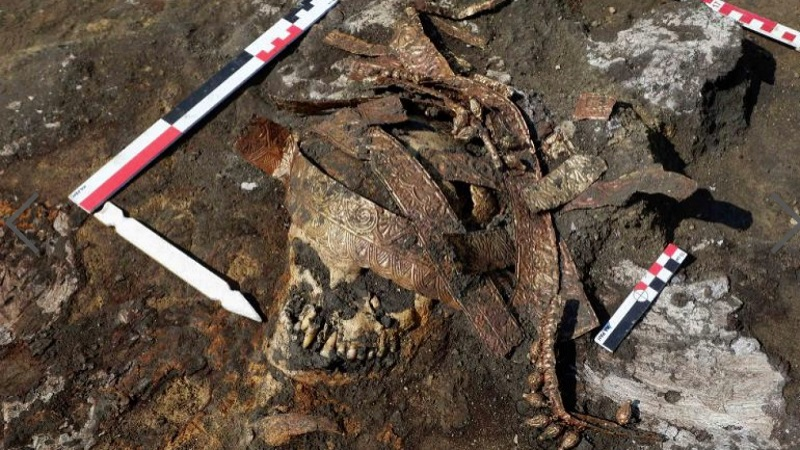Throughout the literature of the ancient world, tales of great bands of warrior women captivated listeners’ imaginations. From China to Greece, stories of their exploits filled hearts with fear and awe. Recently, historians have begun to accept that the Amazons were real, in a way; they were slightly embellished versions of Scythian warriors.
While we’ve known for some time that many of the warrior graves their culture left behind were the burial sites of women, modern DNA analysis allows us to review if every skeleton previously thought to be male really is. One such review of a mummy found in 1988 proves that one young warrior was actually a 13-year-old girl.
The 2600-year-old remains were discovered at Saryg-Bulun in Central Tuva in 1988 when the region was still part of the USSR. Contained in a tightly sealed coffin made of larch trunk, the remains were mummified and well preserved. One report states that a wart on the child’s face was still evident. The coffin also contained a battle-ax, a quiver with arrows, a headdress, coat, and various bronze ornaments.
As the young warrior was presumed to be male, the researchers were surprised when they analyzed her genome and discovered the remains belonged to a young woman. Despite how common it is to see the remains of female warriors, this coffin did not contain items typically given to deceased women, such as beads or mirrors.
Excavator Marina Kilunovskaya explained this to Archaeology.org, “This discrepancy in the norms of the funeral rite received an unexpected explanation: firstly, the young man turned out to be a girl, and this young ‘Amazon’ had not yet reached the age of 14 years.”
The research team will now attempt to get a more accurate dating of the remains and will use CT scans to try and learn precisely how this young warrior died. The various artifacts discovered in the coffin will also be analyzed for metal composition and preserved.
Debunking Gender Stereotypes
The Scythians were the rulers of the Steppes from Ukraine to Xinjiang and the probable inventors of horseback riding. These nomadic warriors also had a reasonably egalitarian society for the ancient world. Many sources agree that cross-dressing was common in their culture, and some go so far as to suggest their idea of gender was fluid.
Across the steppes, women were trained to be warriors just as men were and could prove fearsome in battle. Skeletal remains proven to be female (about a fifth of all discovered remains) often show the same battle injuries as males. Burial sites with weapons and all the honors of a warrior are common for both sexes. Just last year, the gravesite of other female warriors were found.
They were known as a warlike people, and it is thought entire tribes participated in battles. It was said that no nation could stand against them without outside help. However, they also made beautiful art, had an elaborate religious system, and were known for their unique clothing. They had no written language, but descriptions of their culture endure in the writings of their neighbors.
Even if the Amazons weren’t quite real, they were based on an existing culture. As we learn more about how the Scythians lived and died, we’re better able to contextualize the stories and myths they appear in. As with all archaeological discoveries, it also allows us to better understand where humanity has been, so we might make a better choice of where we’re going.








